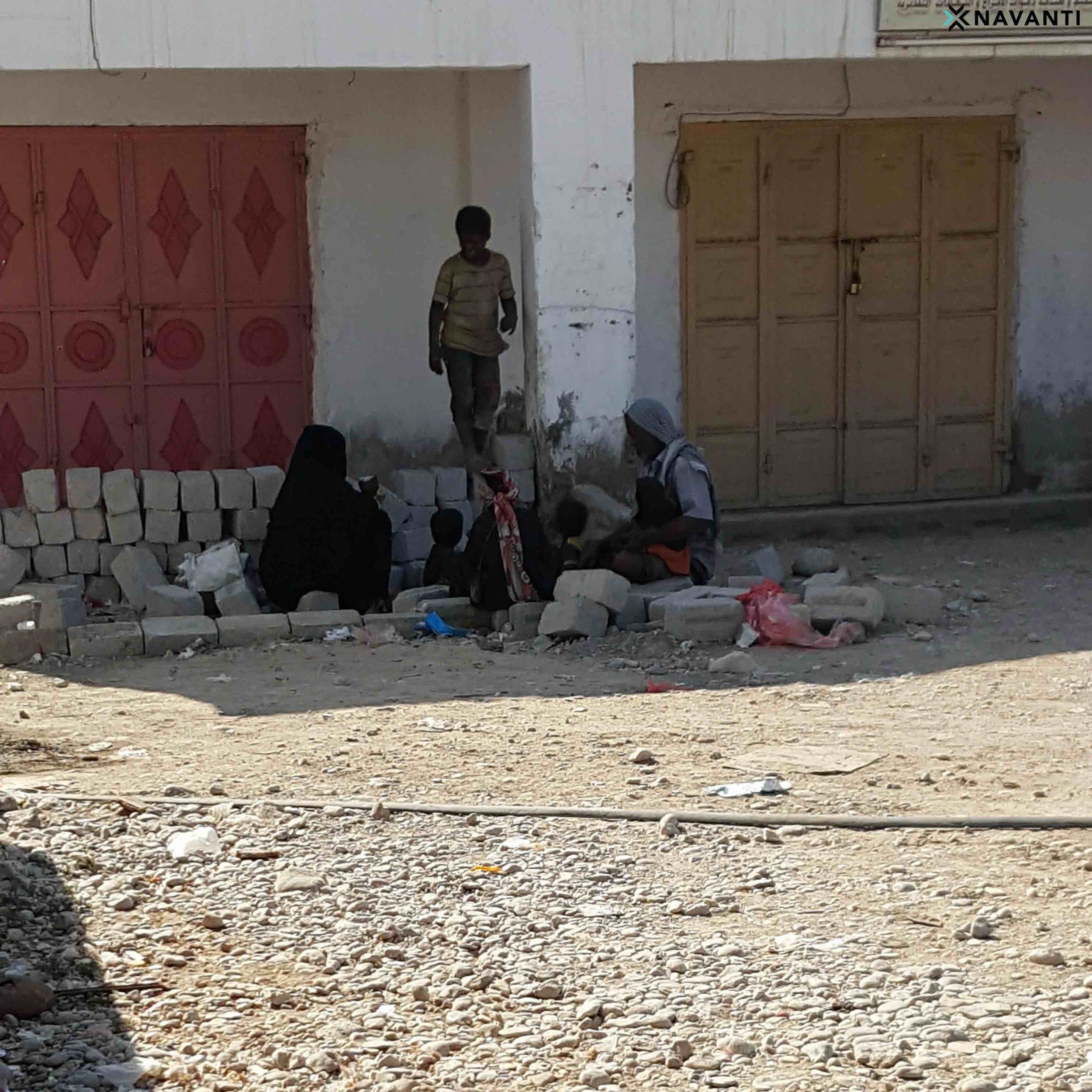Photo Essay: Storms and Currency Woes Pummel Residents of Yemen’s al-Mahra
Yemen’s al-Mahra governorate has avoided the worst of the civil war’s violence. Geographically removed from frontline combat, al-Mahra has benefitted from development projects sponsored by neighboring Oman over the past three decades—residents on both sides of the border share a common dialect and culture. But a series of natural and economic events in late 2018, including storms that battered the Yemeni coast and the falling value of the Yemeni rial, have recently made daily life a struggle for Mahris.

Al-Mahra coastline. Source: Navanti
Unrelenting weather
Cyclone Luban hit the southern Yemen coastline in October 2018, washing out roads, destroying houses, and carrying off farms and bridges as it tore through al-Mahra governorate. Luban was only the latest in a series of storms to affect the area: it came on the heels of Cyclone Mekunu that struck just three months prior, which damaged infrastructure that was, in turn, already compromised by Cyclone Chapala in 2015. A lack of drainage systems compounds the destruction caused by these storms.

Houses in the town of Qishn, al-Mahra, damaged by Cyclone Luban. Source: Navanti
For its part, Luban knocked out sections of the water grid in the provincial capital of al-Ghayda, forcing people to buy filtered water at inflated prices. Luban also increased food scarcity as shipments were cut off due to flooded roads.
Finally, the storm destroyed fishing boats and equipment. Because fishing is one of the governorate’s most important industries, this meant that many residents already struggling to make a living were put out of work.
“A lot of residents lost their income after the storms carried away their boats and destroyed some of their houses. Over the course of a single night people found themselves with no food or shelter.”—Navanti researcher

Family eating patrons’ leftovers from nearby restaurant in Sayhut, al-Mahra. Source: Navanti
Luban coincided with the already weak Yemeni rial plummeting in value during fall 2018, increasing the price of basic necessities such as food and fuel when people were most in need.
The Navanti researcher who visited al-Mahra said there are no accurate statistics detailing the extent of unemployment in the governorate, but noted that “most young people do not work.”

Working class homes in Sayhut, al-Mahra. Source: Navanti
Nevertheless, Mahris are generally able to keep food on the table, due to a majority of families receiving remittances from relatives living in Oman, Saudi Arabia and the UAE. This is an important source of income because some locals refuse to work jobs they deem beneath them.
“Al-Mahra residents prefer not to work at lowly occupations like guard work, trash disposal, or other services like taxi driving, working as a butcher, selling vegetables, opening a barbershop, etc. Traditions and customs impose this sort of mindset on them. Therefore, citizens arriving from other provinces work these jobs, and al-Mahra residents’ opportunities to support their families are very limited: fishing, pastoralism, and they rely, in large part, on their relatives abroad.” — Navanti researcher
Because it borders Oman to the east, al-Mahra experienced an uptick in commercial activity after the Yemen conflict started, and at times was the country’s main transit point for imports and exports. The benefits of this activity accrued to businessmen and traders, while ordinary people continued to rely on development projects sponsored by Oman and, later, the UAE and Saudi Arabia.

Market in the town of Sayhut, al-Mahra. Source: Navanti.

Street scene in al-Ghayda, capital of al-Mahra governorate. Source: Navanti
Traditional architecture at risk
The major storms that hit Al-Mahra over the past three years have threatened one of the governorate’s hidden treasures: well-preserved historical ruins, including religious sites and military forts.
The governorate is home to the historic Mahra sultanate, presided over by the Bin Afrar family from its establishment in 1482 until 1967, when the area became part of the People’s Democratic Republic of Yemen. The Mahra sultanate was historically based in the town of Qishn.

Palace of Sultan Bin Afrar, built in 1277 and renovated in 2019, Qishn, al-Mahra. Source: Navanti
Al-Mahra is also a historical home to practitioners of Sufism, or Islamic mysticism. Old Sufi mosques and shrines to Sufi religious figures dot the landscape.

Historic Sufi mosque in Sayhut, al-Mahra. Source: Navanti

Sufi shrine in Sayhut, al-Mahra. Source: Navanti

Historic Sufi mosque in Sayhut, al-Mahra. Source: Navanti
Notable architecture in al-Mahra is not limited to religious or political sites. One local tradition holds that after marrying, the husband builds a room for his wife that is attached to her family’s house, in which the newlyweds live. This custom, combined with the large amount of available space in the al-Mahra countryside, has led to the construction of beautiful, spacious one-story houses.

Traditional houses in Sayhut, al-Mahra. Source: Navanti.

Working class homes in al-Ghayda, al-Mahra. Source: Navanti

House in Sayhut, al-Mahra. Source: Navanti
Years into Yemen’s ongoing conflict, a combination of geographic, political, and cultural factors have kept Mahris safe from the worst of the war’s violence, even as they suffer economic impacts and contend with natural disasters.

The al-Mahra coast. Source: Navanti

